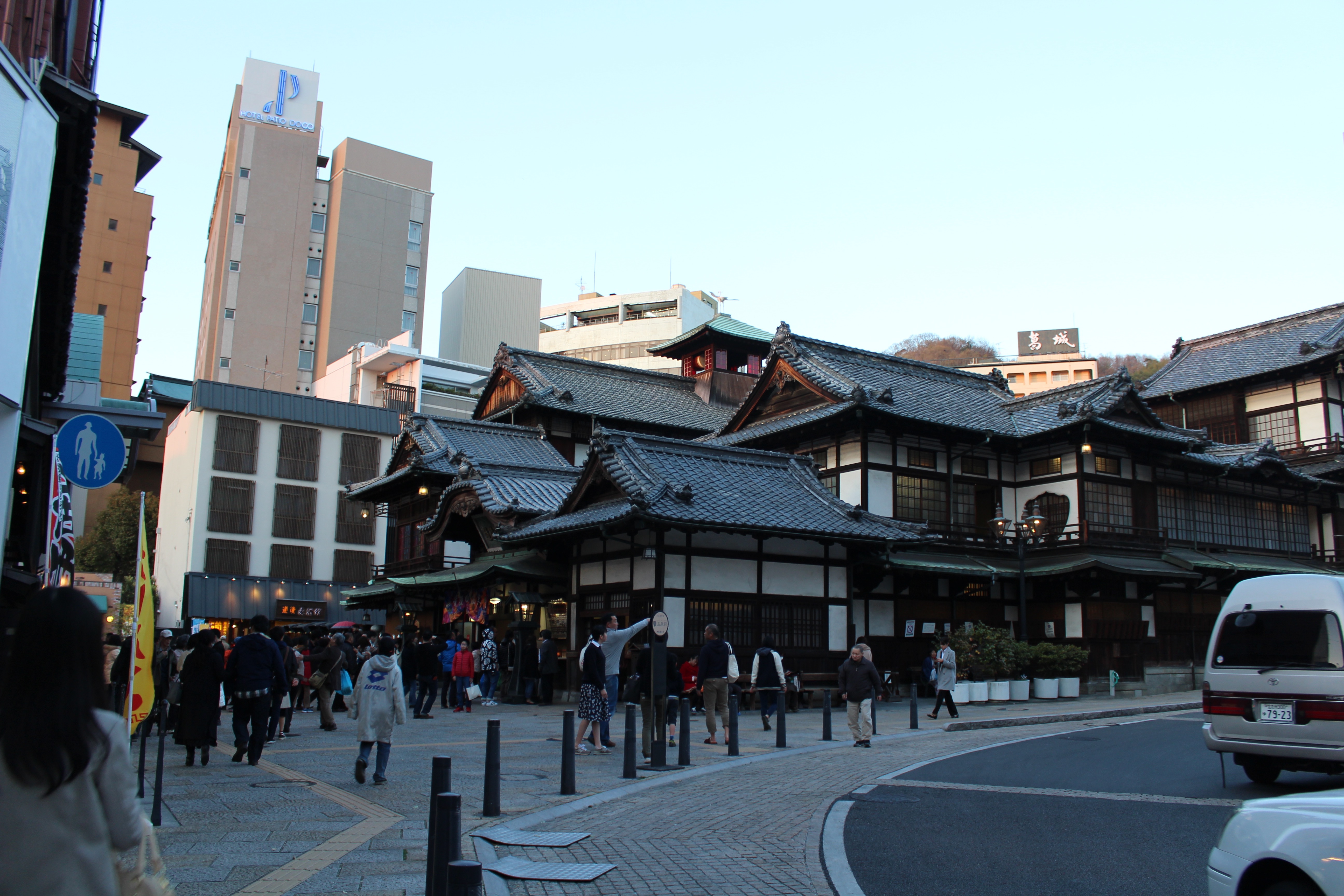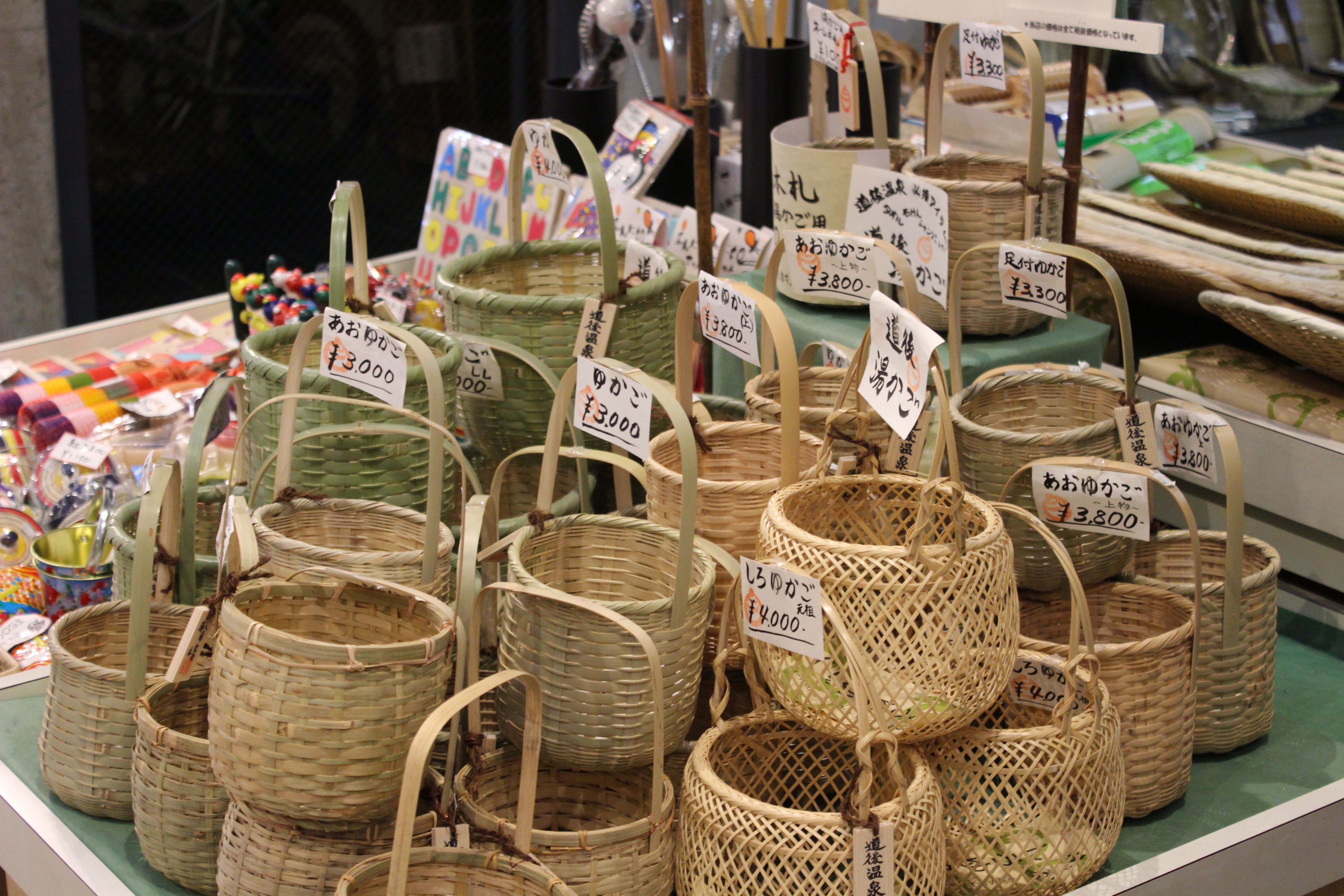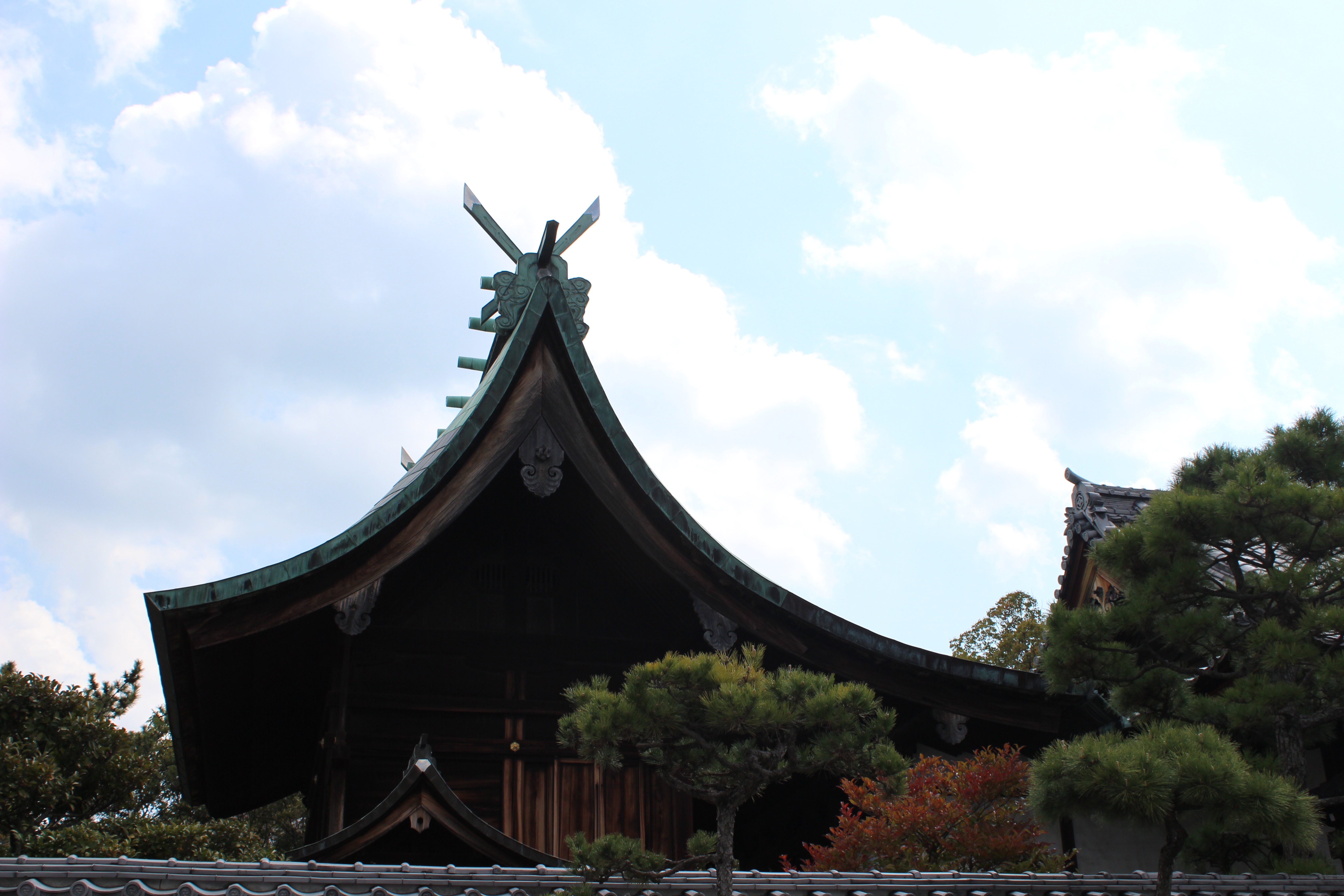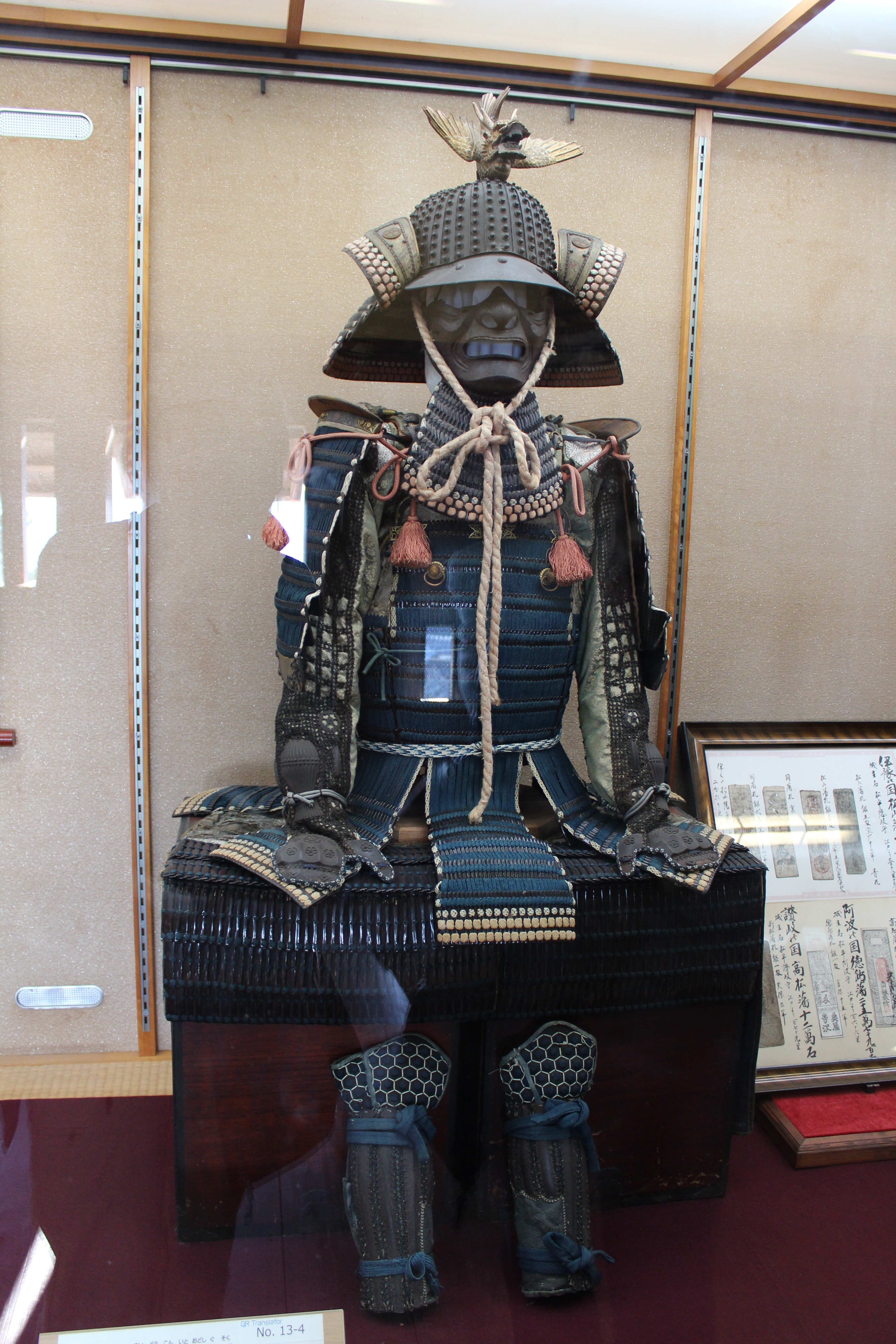Dōgo Onsen and a Shintō wedding
Dōgo Onsen is one of the oldest hot springs in Japan and has a 3000-year-old
history. The present building goes back to 1894 and is used as a general bathhouse.
Japan has over 2000 hot springs.
Dōgo Onsen surrounded by modern buildings
Many couples come to relax, but men and women bathe in different sections.
Thorough cleansing is done before going into the common area to bathe. Also,
the water is very hot and one can only stay in the water for a short time.
Two ladies dressed in Kimonos in front of the Onsen
Young people often rent Kimonos and go to tourist areas to either make photos for
themselves or stage for tourists.
A covered shopping mall leads to the onsen. The couple in the photo wear Yukatas
and carry a little basket for the bathing items they need. Many people wear
Yukatas (bathrobe) when going to the Onsen. Every hotel and place to stay overnight
offers also a Yukata. I loved this tradition! After a relaxing bath (Ofuro), it was great
to slip into a cotton Yukata, eat dinner in this outfit and later sleep in it.
Baskets to carry items needed for the Onsen
At the Isaniwa Shrine, I could witness a Shintō wedding. Actually, the wedding
ceremony was done inside the shrine where I was not allowed to go; only the family
photos were taken outside. Shintō shrines are usually used for weddings whereas
temples serve for funerals.
After the photo ceremony, the couple left in a typical hand pulled Japanese Rikshaw
(jinrikisha) The Rikshaw is a Japanese invention dating back to the 19th century.
The roof-line of Yu Jinja or hot spring shrine. The crossed gabled roof called “Chigi”
is typical for Shintō architecture. In this shrine, sacred ritual dances and prayers are
performed when an earthquake or other causes stop the flow of the hot spring of the
Dōgo Onsen.
I also visited the castle of Matsuyama City. It is one of the 12 oldest remaining castles
of Japan (17th century), the view from the 132 m high hill down to Matsuyama city
was fantastic!
View to one of the outer courtyards of the castle with over 200 cherry trees. Flags and
lanterns were prepared for the Hanami, the cherry blossom festival. Every day, the
television forecast the Sakura, when the cherry trees would be in full bloom.
A Samurai outfit exhibited in the castle
.
.
.










